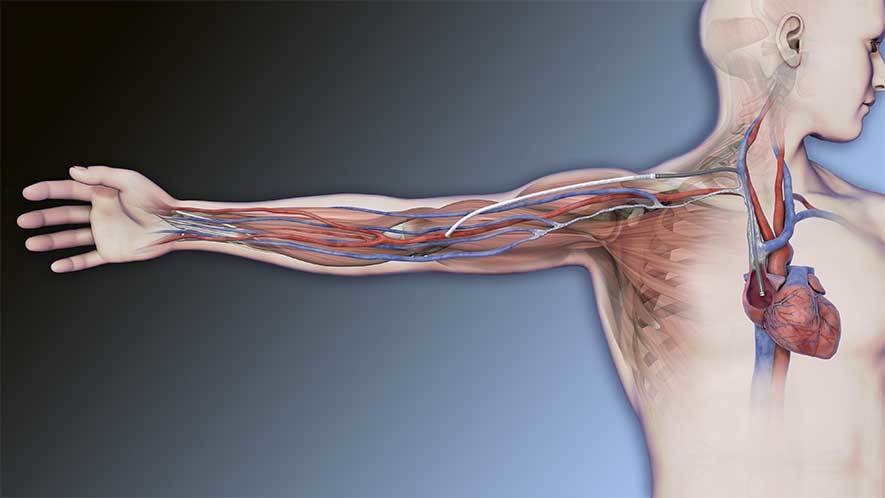
Central venous stenosis is a common and serious vascular complication among long-term hemodialysis patients that can lead to the loss of vascular access and a diminished life expectancy. To bypass venous stenosis and improve long-term hemodialysis adequacy, various permanent subcutaneous arteriovenous graft devices have been manufactured as a solution for hemodialysis patients who have exhausted all other access options.
One such product called the HeRO™ Graft was approved by the FDA in 2008. In comparison to catheters, it’s the only clinically proven permanent subcutaneous arteriovenous graft to reduce the risk of vascular access-related infections by 69%, improve adequacy of hemodialysis by up to 32% (1.7 Kt/V), and cut interventions needed to maintain access function by more than half.1 Studies have also linked the HeRO Graft to high cumulative patency rates that reach 87% at two years.2
Cost savings advantages have also been linked with using the HeRO Graft. A US healthcare model for provision of hemodialysis access predicted that in comparison to catheters, using the HeRO Graft could result in an average of 23% annual savings.3 Dialysis centers could save over $3000 per patient each year.4 And hospitals can save thousands in hefty admission costs that accrue because of device-related infections—rates that would commonly range between $23K to $56K per stay.5,6
What makes the HeRO Graft so unique?
Unlike other graft products, the HeRO Graft doesn’t depend on venous anastomosis to bypass venous stenosis. Instead, a radiopaque silicone Venous Outflow component reinforced with kink and crush-resistant nitinol braid is placed in the right atrium and securely attaches to an adjacent ePTFE hemodialysis graft by way of a proprietary titanium connector. This mechanism allows for blood to return from the arteries back to the heart.
To learn more about the HeRO Graft and how you can apply it to your practice, sign up for the upcoming Think HeRO training course held on March 30-31 at the Houston Methodist Institute for Technology, Innovation & Education (MITIESM) in Houston, Texas, by talking to your Merit representative or visiting Merit.com/Education
- Katzman, H., McLafferty, R., Ross, J., Glickman, M., Peden, E., & Lawson, J. (2009). Initial experience and outcome of a new hemodialysis access device for catheter-dependent patients. J Vasc Surg, 50(3): 600-607.e1.
- Gage, S., Katzman, H., Ross, J., Hohmann, S., Sharpe, C., Butterly, D., & Lawson, J. (2012). Multi-center experience of 164 consecutive Hemodialysis Reliable Outflow [HeRO] Graft implants for hemodialysis treatment. Eur J Vasc Endovasc Surg, 44(1): 93-99.
- Dageforde, L., Bream, P., & Moore, D. (2012). Hemodialysis Reliable Outflow (HeRO) device in end-stage dialysis access: a decision analysis model. J Surg Res, 177(1): 165-171.
- Yost, L., Dinwiddie, L. (2010, Nov.). Impact of the use of the HeRO vascular access graft vs. tunneled dialysis catheters on dialysis provider economics in an era of bundling. Poster session presented at ASN, American Society of Nephrology, Denver, CO.
- Ramanathan, V., Chiu, E., Thomas, J., Khan, A., Dolson, G., & Darouiche, R. (2007). Healthcare costs associated with hemodialysis catheter–related infections: a single‐center experience. Infect Control Hosp Epidemiol, 28(5): 606-609.
- O’Grady, N., Dellinger, E., Gerberding, J., Heartd, S. Maki, D., Masur, H., McCormick, R., Mermel, L., Pearson, M., Raad, I., Randolph, A., & Weinstein, R. (2002). Guidelines for the prevention of intravascular catheter-related infections. The Hospital Infection Control Practices Advisory Committee, Center for Disease Control and Prevention, U.S. Pediatrics, 110(5): e51.